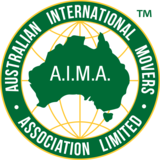A US customs inspection can be a frustrating and expensive process for anyone moving to the United States. If customs choose to examine a container for any reason (whether it is at random or because of suspicion) the costs for not only the exam but also any fees incurred while it is being done are the responsibility of the shipper (owner of the goods). The Customs Border Patrol (CBP) utilizes unknown algorithms to evaluate the degrees of risk for each shipment entering and departing the United States which helps to alert potential illegal activity.
There are 3 main examination methods that US customs use to conduct to determine whether they release or confiscate a shipment.
The X-Ray Exam (VACIS exam)
The most typical type of inspection is known as a Vehicle and Cargo Inspection Systemor (VACIS exam), which is a fancy name for an X-Ray Exam. This type of inspection is generally the least costly and less time-consuming inspection depending on the US port your goods are entering or departing from. Any delay generally depends upon the number of shipments in the queue, but can be performed in a day or so of the shipment being flagged. The cost for this inspection is approximately US$300.00 and payable to CBP. The container is placed into a unit which uses gamma ray technology to detect contraband such as drugs, weapons, or currency and is not an overly invasive examination. There are additional transportation fees on top of the exam fees charged by CBP, as the container must be transported to a CBP approved inspection site.
The Tail Gate Exam
The container is inspected at the port. A customs officer breaks the seal of the container and inspects its contents. If everything is correct, they will release the container or the container is escalated to the final level of exams. There may be costs associated with a Tail Gate examination.
The Intensive Exam
The entire container is taken to a Customs Exam Site (CES). The contents of the container are emptied. At the CES an authorised agent will empty the container, separate the packages, open boxes, and prepare the cargo for a customs officer to fully inspect the cargo. An Intensive Customs Exam is usually ordered when something triggers a level of suspicion during a VACIS exam, which warrants a higher level inspection.
This type of inspection means that the unit must be transported to a Customs Examination Station (CES) so that the seal can be broken and the shipment can be accessed by CBP officers for further inspection. This is costly not only because of the labor required to inspect it but also can result in additional detention and demurrage (port storage) charges adding more costs to the shipper. This process, depending on the port, can take as long as a week or up to 30 days considering the number of shipments to be inspected in the queue. These costs can run into the thousands, depending of the number of items being examined. When household goods are sent to an Intensive Customs Exam it can be extremely costly as the inspection can take several days, and the unloading/reloading of those goods isn’t performed with the same care as given by the moving company. Unfortunately, this can result in damages to the shipment. The handling of the goods is done by a company contracted by U.S. Customs, they are not liable for damages caused during the inspection process. Damage resulting from a customs examination is included in one of the many risks covered under AIMA member companies’ transit insurance policies which are offered to all customers as part of the standard AIMA international removal contract. AIMA strongly advises consumers undertaking international removals to ensure they have adequate coverage against transit or inspection related damages.
